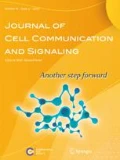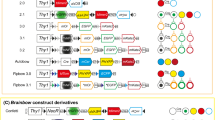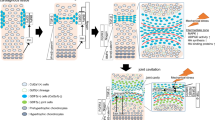Abstract
CCN5/WISP2 is part of the CCN family of matricellular proteins, but is distinct in that it lacks the C-terminal (CT) domain. Although CCN5 has been shown to impact cell proliferation and differentiation in vitro, its role in vivo is unclear. We therefore generated mice using ES cells developed by the Knockout Mouse Project (KOMP) in which exons 2-5, which encode the all of the conserved protein coding regions, are replaced by a lacZ cassette. Ccn5LacZ/LacZ mice were viable and apparently normal. Based on previous studies showing that CCN5 impacts osteoblast proliferation and differentiation, we performed an analysis of adult bone phenotype. LacZ expression was examined in adult bone, and was found to be strong within the periosteum, but not in trabecular bone or bone marrow. Micro-CT analysis revealed no apparent changes in bone mineral density (BMD) or bone tissue volume (BV/TV) in Ccn5LacZ/LacZ mice. These studies indicate that CCN5 is not required for normal bone formation, but they do not rule out a role in mechanotransduction or repair processes. The availability of Ccn5LacZ mice enables studies of CCN5 expression and function in multiple tissues.




Similar content being viewed by others
Change history
17 February 2018
In the original publication’s title CCN5/WISP5 should have been CCN5/WISP2.
References
Bouxsein ML, Boyd SK, Christiansen BA, Guldberg RE, Jepsen KJ, Müller R (2010) Guidelines for assessment of bone microstructure in rodents using micro-computed tomography. J Bone Miner Res 25:1468–1486
Canalis E, Smerdel-Ramoya A, Durant D, Economides AN, Beamer WG, Zanotti S (2010a) Nephroblastoma overexpressed (Nov) inactivation sensitizes osteoblasts to bone morphogenetic protein-2, but nov is dispensable for skeletal homeostasis. Endocrinology 151:221–233
Canalis E, Zanotti S, Beamer WG, Economides AN, Smerdel-Ramoya A (2010b) Connective tissue growth factor is required for skeletal development and postnatal skeletal homeostasis in male mice. Endocrinology 151:3490–3501
Chen PC, Cheng HC, Yang SF, Lin CW, Tang CH (2014) The CCN family proteins: modulators of bone development and novel targets in bone-associated tumors. Biomed Res Int 2014:437096
Delmolino LM, Castellot JJ (1997) Heparin suppresses sgk, an early response gene in proliferating vascular smooth muscle cells. J Cell Physiol 173:371–379
Grünberg JR, Hammarstedt A, Hedjazifar S, Smith U (2014) The Novel Secreted Adipokine WNT1-inducible Signaling Pathway Protein 2 (WISP2) Is a Mesenchymal Cell Activator of Canonical WNT. J Biol Chem 289:6899–6907
Heath E, Tahri D, Andermarcher E, Schofield P, Fleming S, Boulter CA (2008) Abnormal skeletal and cardiac development, cardiomyopathy, muscle atrophy and cataracts in mice with a targeted disruption of the Nov (Ccn3) gene. BMC Dev Biol 8:18
Jiang J, Hu Z, Lyons KM (2017) Design and Analysis of CCN Gene Activity Using CCN Knockout Mice Containing LacZ Reporters. Methods Mol Biol 1489:325–345
Jones JA, Gray MR, Oliveira BE, Koch M, Castellot JJ (2007) CCN5 expression in mammals: I. Embryonic and fetal tissues of mouse and human. J Cell Commun Signal 1:127–143
Kawaki H, Kubota S, Suzuki A, Suzuki M, Kohsaka K, Hoshi K, Fujii T, Lazar N, Ohgawara T, Maeda T, Perbal B, Takano-Yamamoto T, Takigawa M (2011) Differential roles of CCN family proteins during osteoblast differentiation: Involvement of Smad and MAPK signaling pathways. Bone 49:975–989
Kumar S, Hand AT, Connor JR, Dodds RA, Ryan PJ, Trill JJ, Fisher SM, Nuttall ME, Lipshutz DB, Zou C, Hwang SM, Votta BJ, James IE, Rieman DJ, Gowen M, Lee JC (1999) Identification and cloning of a connective tissue growth factor-like cDNA from human osteoblasts encoding a novel regulator of osteoblast functions. J Biol Chem 274:17123–17131
Maeda A, Ono M, Holmbeck K, Li L, Kilts TM, Kram V, Noonan ML, Yoshioka Y, McNerny EM, Tantillo MA, Kohn DH, Lyons KM, Robey PG, Young MF (2015) WNT1-induced Secreted Protein-1 (WISP1), a Novel Regulator of Bone Turnover and Wnt Signaling. J Biol Chem 290:14004–14018
Matsushita Y, Sakamoto K, Tamamura Y, Shibata Y, Minamizato T, Kihara T, Ito M, Katsube K, Hiraoka S, Koseki H, Harada K, Yamaguchi A (2013) CCN3 protein participates in bone regeneration as an inhibitory factor. J Biol Chem 288:19973–19985
Myers RB, Rwayitare K, Richey L, Lem J, Castellot JJ (2012) CCN5 Expression in mammals. III. Early embryonic mouse development. J Cell Commun Signal 6:217–223
Parisi MS, Gazzerro E, Rydziel S, Canalis E (2006) Expression and regulation of CCN genes in murine osteoblasts. Bone 38:671–677
Pennica D, Swanson TA, Welsh JW, Roy MA, Lawrence DA, Lee J, Brush J, Taneyhill LA, Deuel B, Lew M, Watanabe C, Cohen RL, Melhem MF, Finley GG, Quirke P, Goddard AD, Hillan KJ, Gurney AL, Botstein D, Levine AJ (1998) WISP genes are members of the connective tissue growth factor family that are up-regulated in wnt-1-transformed cells and aberrantly expressed in human colon tumors. Proc Natl Acad Sci U S A 95:14717–14722
Robinson JA, Chatterjee-Kishore M, Yaworsky PJ, Cullen DM, Zhao W, Li C, Kharode Y, Sauter L, Babij P, Brown EL, Hill AA, Akhter MP, Johnson ML, Recker RR, Komm BS, Bex FJ (2006) Wnt/beta-catenin signaling is a normal physiological response to mechanical loading in bone. J Biol Chem 281:31720–31728
Russo JW, Castellot JJ (2010) CCN5: biology and pathophysiology. J Cell Commun Signal 4:119–130
Rydziel S, Stadmeyer L, Zanotti S, Durant D, Smerdel-Ramoya A, Canalis E (2007) Nephroblastoma overexpressed (Nov) inhibits osteoblastogenesis and causes osteopenia. J Biol Chem 282:19762–19772
Zhao G, Huang BL, Rigueur D, Wang W, Bhoot C, Charles KR, Baek J, Mohan S, Jiang J, Lyons KM (2018) CYR61/CCN1 regulates sclerostin levels and bone maintenance. J Bone Miner Res. https://doi.org/10.1002/jbmr.3394
Acknowledgements
This work was supported by NIAMS/NIH grants R01 AR052686 and R21 AR071734 to KML.
Author information
Authors and Affiliations
Corresponding author
Additional information
Jie Jiang and Gexin Zhao are co first authors
An erratum to this article is available at https://doi.org/10.1007/s12079-018-0463-5.
Rights and permissions
About this article
Cite this article
Jiang, J., Zhao, G. & Lyons, K.M. Characterization of bone morphology in CCN5/WISP5 knockout mice. J. Cell Commun. Signal. 12, 265–270 (2018). https://doi.org/10.1007/s12079-018-0457-3
Received:
Accepted:
Published:
Issue Date:
DOI: https://doi.org/10.1007/s12079-018-0457-3




